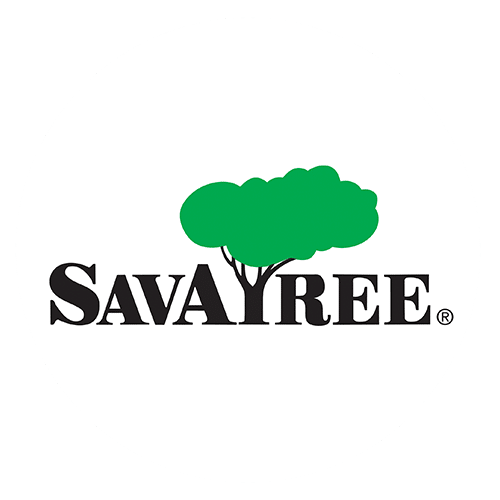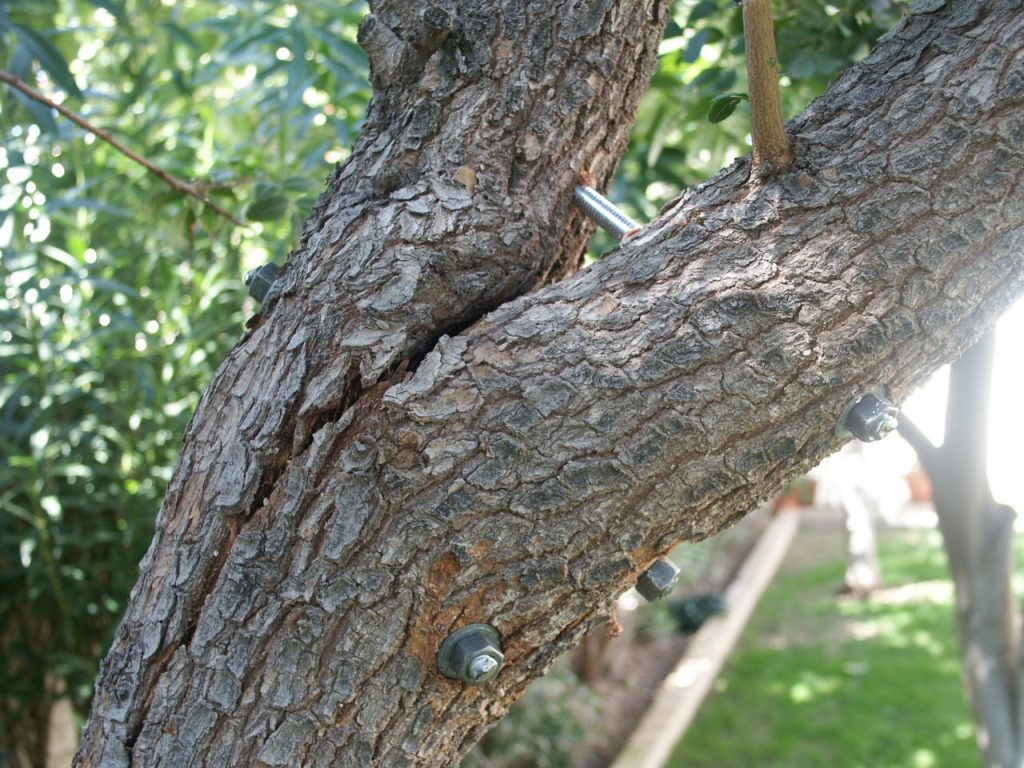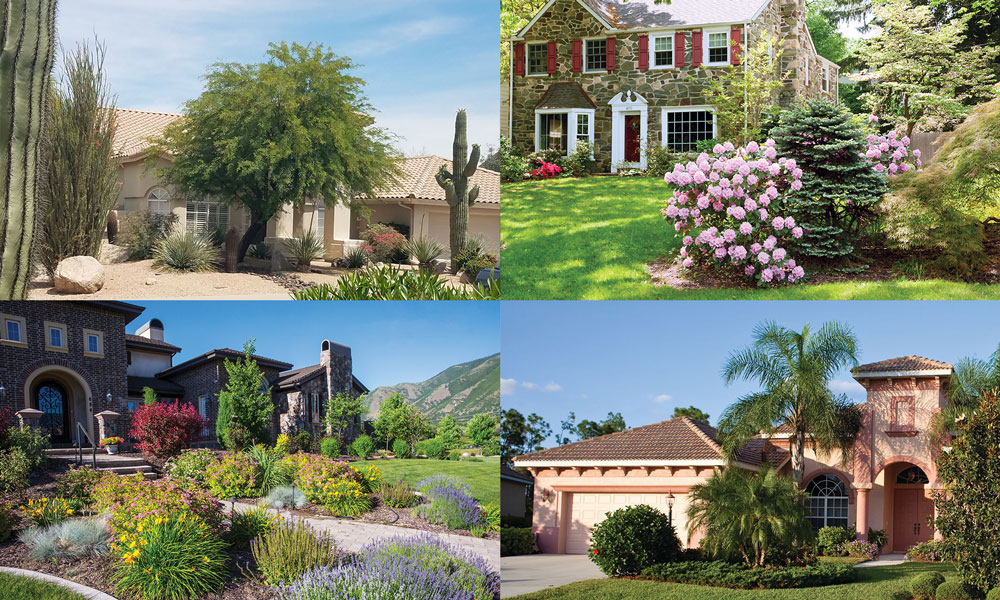Types of Tree Support Systems
Cabling and bracing are the most commonly-used tools to protect or improve a tree’s structural integrity. Staking methods are used less frequently, but are sometimes needed to support a newly-planted tree while it establishes a supportive root system.
Cabling
Cabling reduces the risk of breaking or splitting by restricting the distance branches or co-dominant leaders can move in relation to the rest of the tree. The cables are typically installed in the upper crown or across a weak crotch (the bottom point of connection between two or more tree limbs or trunks). Traditional static cabling systems are made from high-strength, long-lasting steel wire and hardware, and allow for very little movement in the tree. Newer dynamic cabling systems are made from synthetic fabric roping and sling attachments; the “give” in the dynamic cabling allows for more natural movement in the tree. Your SavATree arborist can determine which type of system is best suited to your tree and property.
Bracing
Bracing rods are installed in trees with multiple or co-dominant leaders to reduce the risk of the leaders splitting or to repair splits that have already occurred. The rigid braces are installed directly through the union of the weak branches and stems — either as a “through-rod” (where the rod is inserted through the trunk or branch and bolted with a nut on either side) or a “dead-end” brace (where the rod is threaded directly into the tree trunk or branch). Bracing rods are combined with cabling to gain the most stable support.
Staking
Staking is a support method used to hold a tree upright and the root ball in place, or to straighten the trunk. Staking can involve tying rigid stakes to a young tree’s trunk, or affixing three or four wires or straps (known as guys) to the tree and then anchoring the guys to the ground with stakes or other hardware.
Staking can be useful in certain circumstances. It is most typically used on a newly-planted tree to give added reinforcement while it establishes enough of a root system to stand on its own. Perhaps the tree has a small root system that cannot support the expanse of branches and leaves above it. Or maybe the tree is planted in a very windy spot that puts it in danger of being uprooted. Sometimes even more mature trees that are damaged by weather events can periodically start to uproot, and staking them in their correct and upright position can help them re-grow their root systems.
As with any supplement support system, our arborists employ staking only when necessary, and for the shortest time possible. The chance of injury to the tree increases with the length of time the strapping devices are attached to it. And when staking the at-risk tree, arborists ensure the application allows for some degree of movement. Why? When a tree is allowed to sway in the wind, that swaying movement triggers the growth of important structural fibers at the base of the trunk.






